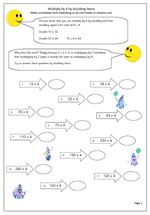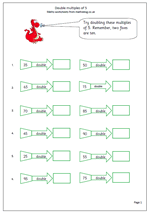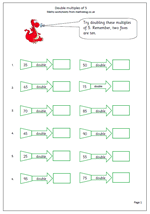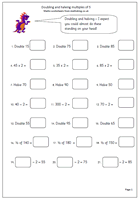 Knowing the 4 times table is very important but using it is not always the most efficient way of finding an answer when using just mental methods. here we have a worksheet for year 4 children which looks at an alternative approach when multiplying by 4. This uses knowledge of the 2 times table to double and double again.
Knowing the 4 times table is very important but using it is not always the most efficient way of finding an answer when using just mental methods. here we have a worksheet for year 4 children which looks at an alternative approach when multiplying by 4. This uses knowledge of the 2 times table to double and double again.
With some numbers this could be a better way. For example;
150 x4 can be done easily by doubling 150 to get 300 and then doubling 300 to get 600 – all done ‘in your head’ in less than a second!
Why not try this worksheet, to be found in the Year 4 calculating category.


